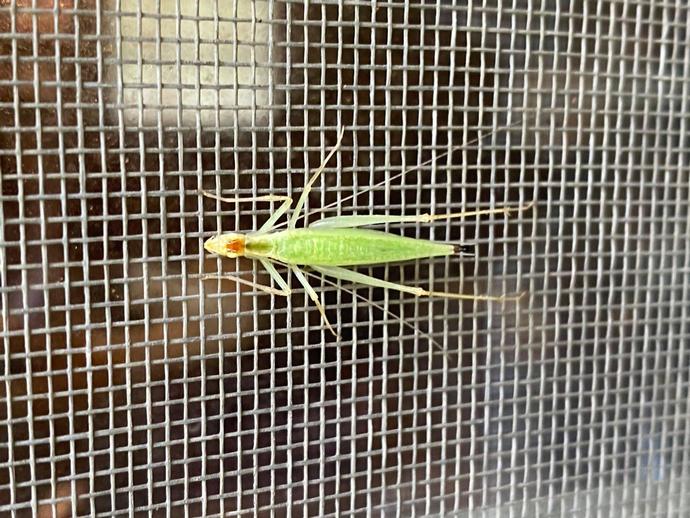October 26, 2020
It's time for Monday's #BenInNature update! This is the narrow-winged tree cricket (Oecanthus niveus), and whenever I see a tree cricket, I think of the late great VMNH Curator of Entomology Dr. Richard Hoffman. If you'll indulge me in a long-winded story, I'll explain why.
The summer of my fifth grade year, I volunteered in Dr. Hoffman's lab at the museum's former site on Douglas Avenue. I've always been fascinated by insects, so this was a dream come true for nerdy young Ben (as opposed to nerdy older Ben). My job was simple: Dr. Hoffman would routinely set out pitfall traps for insects, and it was my mission to sort through the bucket of bugs preserved in isopropyl and separate them into piles for him: one pile for ants, one pile for spiders, one pile for beetles and so on. I had an absolute blast.
The best part of the job was that Dr. Hoffman was very generous with his time and would answer any questions I had (and I was 10 years old, so I had a lot of questions). One day I asked him about the rarest insects in the VMNH collections. He ushered me over to one of the collection cabinets and pulled out a drawer full of tree crickets, then removed a little box with a single tree cricket in it.
That tree cricket, he explained, was one he had collected in Virginia in the late '60s, and it was the only example of its species ever found.
I vividly remember looking at this little tree cricket mounted on its pin. It absolutely blew my mind that I was looking at the only such tree cricket ever collected, an example of a species that may not have even existed anymore by that point. It was a moment that really cemented my fascination with the natural world and probably helped lead to my current career at VMNH, where now I get to routinely pester Dr. Kal Ivanov about insects all the time. And of course, in the years following my summer volunteer gig, I continued to bring Dr. Hoffman any unusual insects I found. Each time I was convinced that I had found something entirely new to science, and each time he would identify it before the jar was halfway out of my pocket, but he would always take the time to tell me all about whatever critter I'd discovered.
And that is why, all these years later, I always think of Dr. Hoffman when I see a tree cricket ... just like this one, the narrow-winged tree cricket (Oecanthus niveus)! This particular species in common in the eastern U.S., and tree crickets can be found on every continent except Antarctica. Tree crickets are nocturnal and can be found in trees (of course), shrubs, and tall weeds. You generally won't find them on plants that are close to the ground, however.
Tree crickets sing at night and will continue to sing even if you shine a light on them! They're also drawn to porch lights. I took this photo more than a month ago, but tree crickets should still be active in Virginia well into November, so keep an eye peeled!
ABOUT #BenInNature
Social distancing can be difficult, but it presents a great opportunity to become reacquainted with nature. In this series of posts, Administrator of Science Ben Williams ventures outdoors to record a snapshot of the unique sights that can be found in the natural world. New updates are posted Monday - Friday, with previous posts highlighted on the weekends.
NATURE PHOTO IDENTIFICATIONS
If you discover something in nature that you would like help identifying, be sure to message us right here on Facebook with a picture (please include location and date of picture) and we'll have our experts help you identify it!

 Hours & Admissions
Hours & Admissions Directions
Directions

